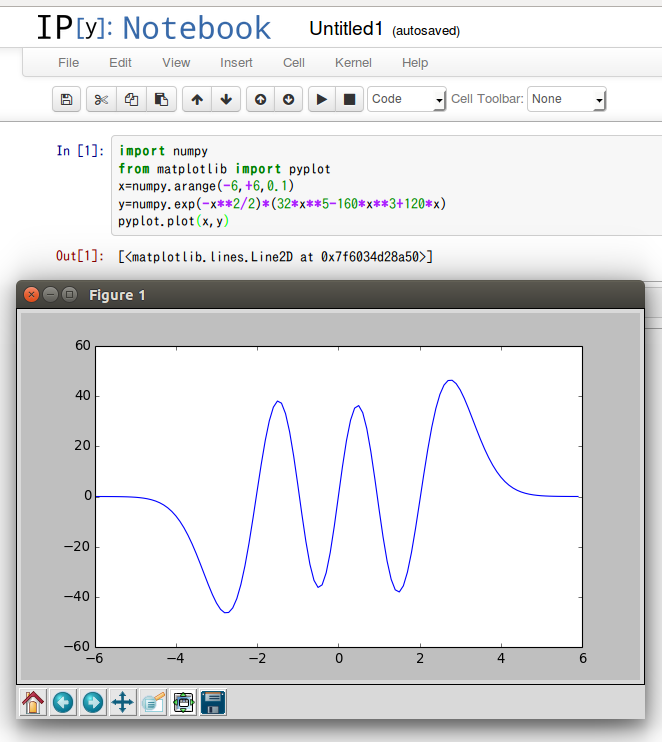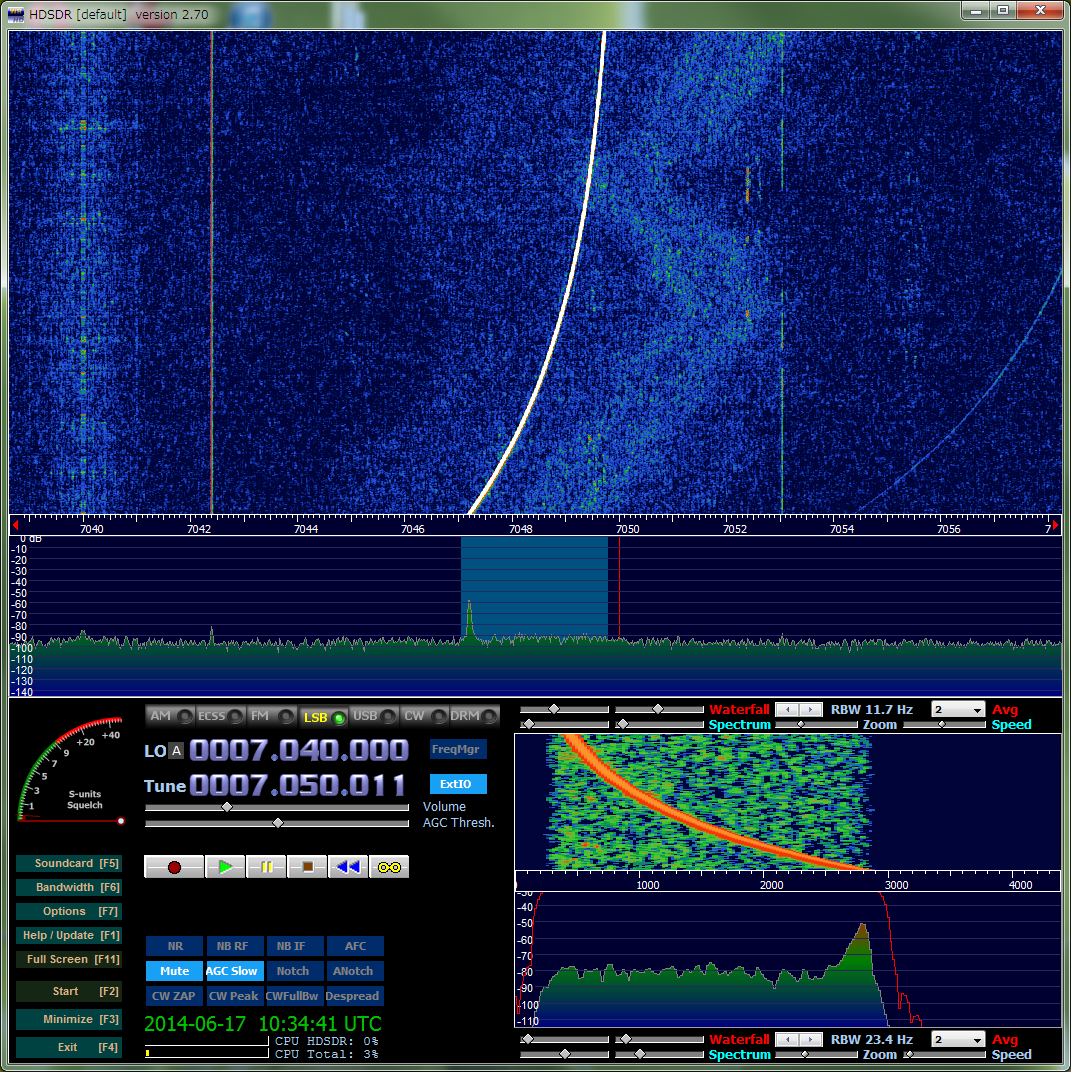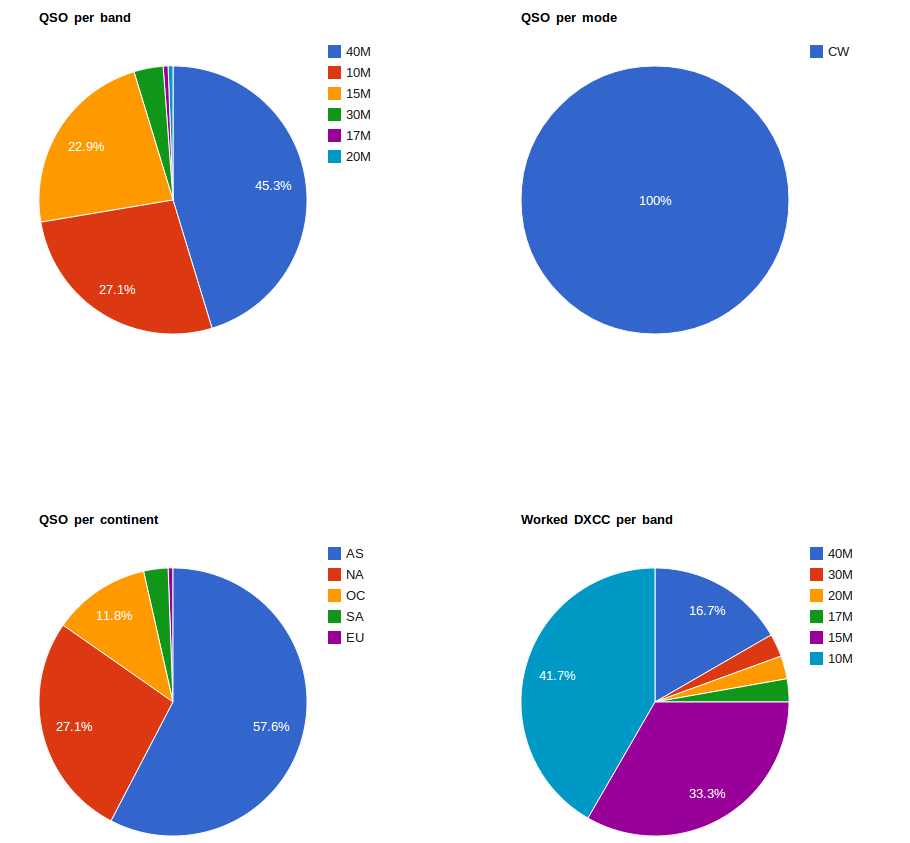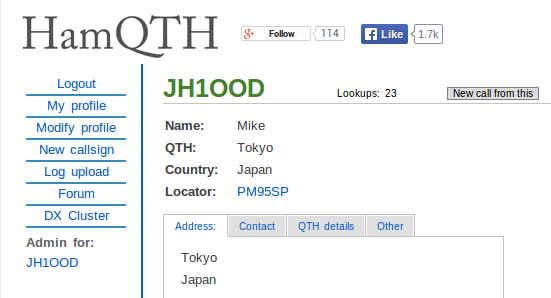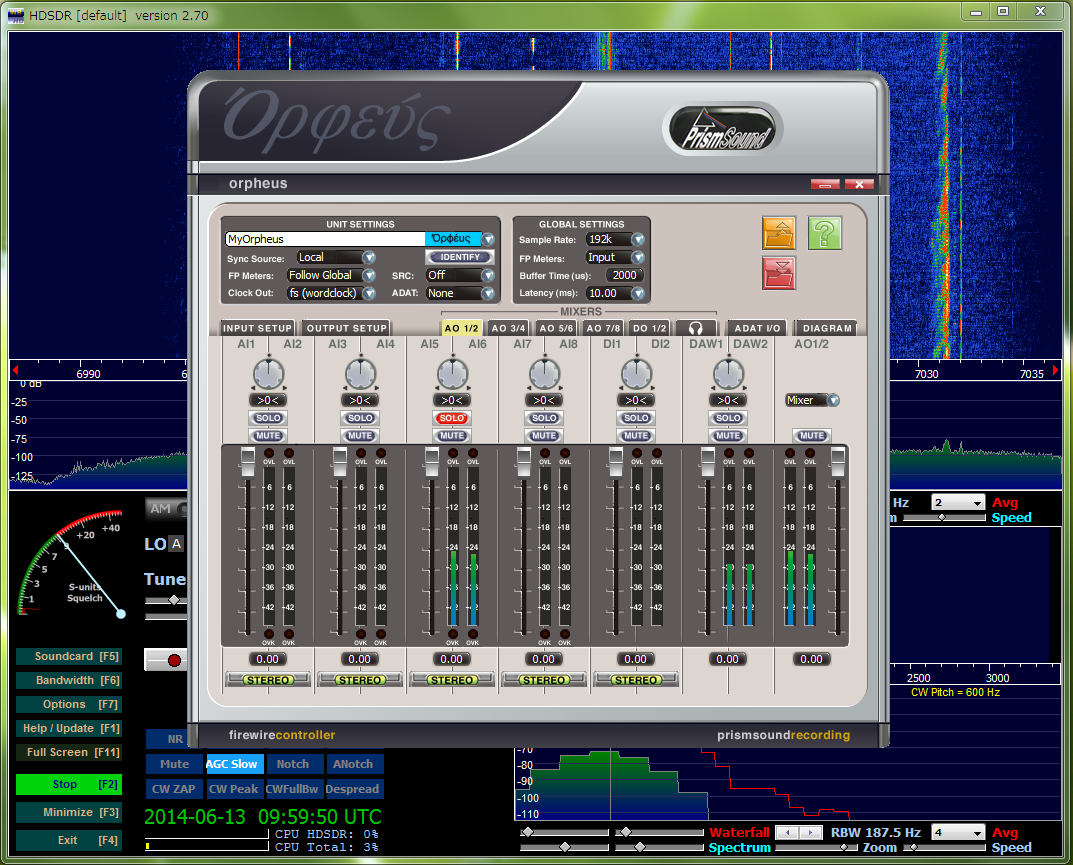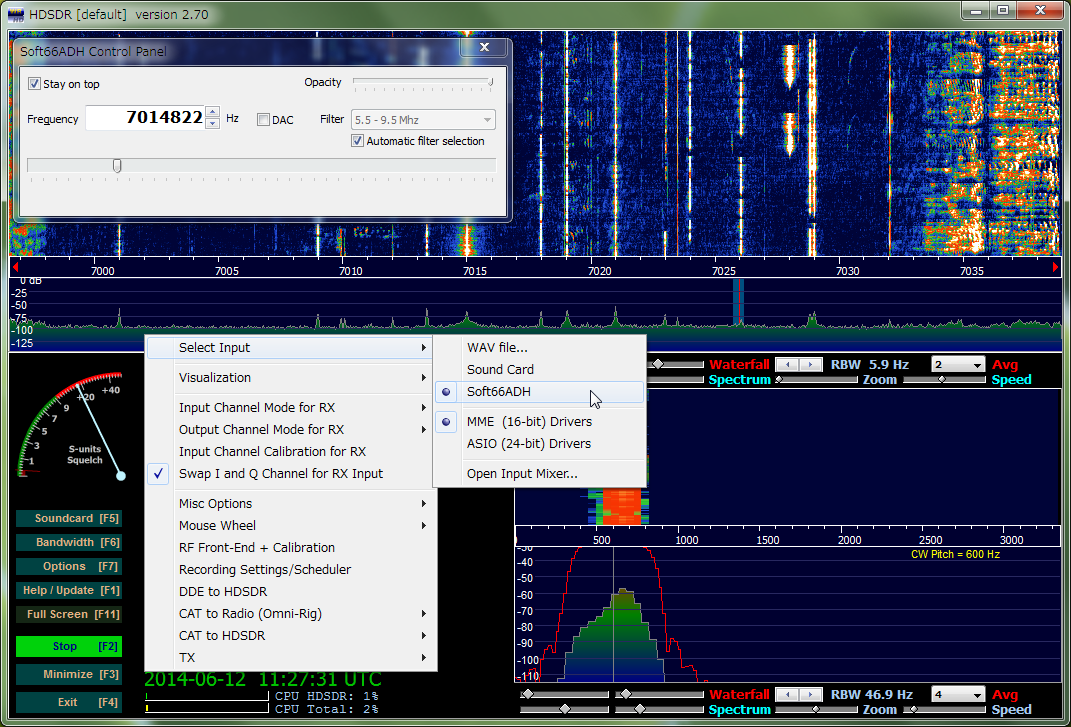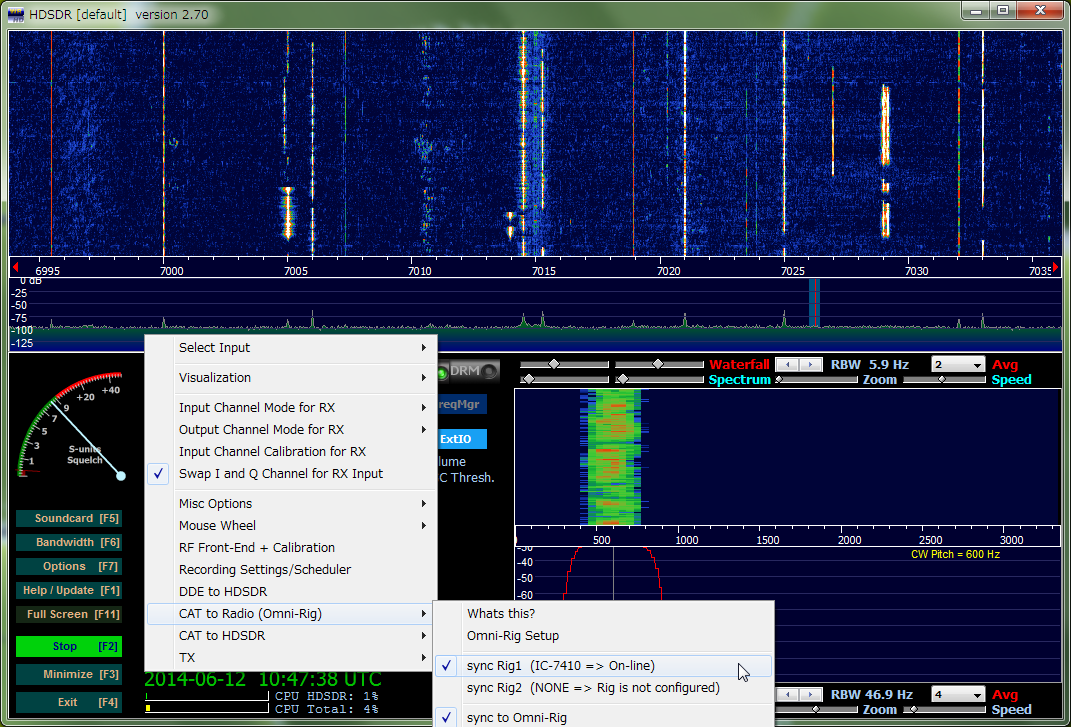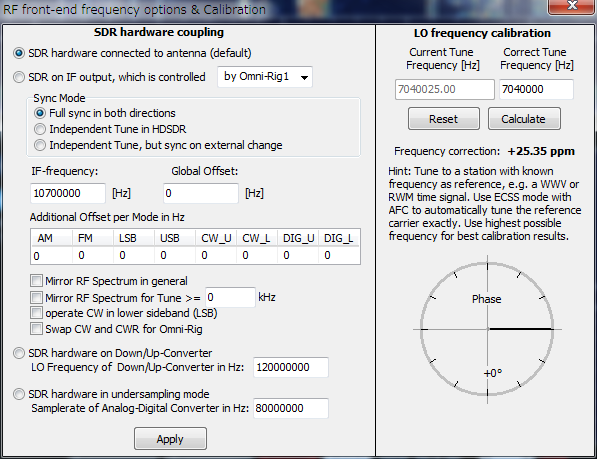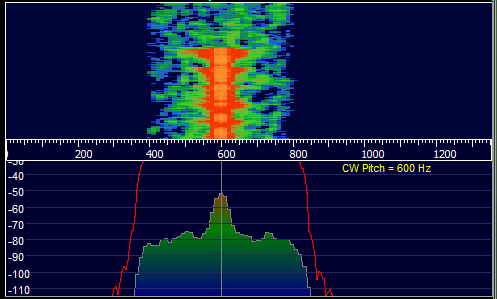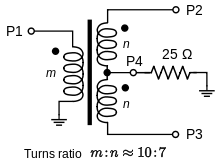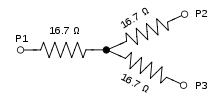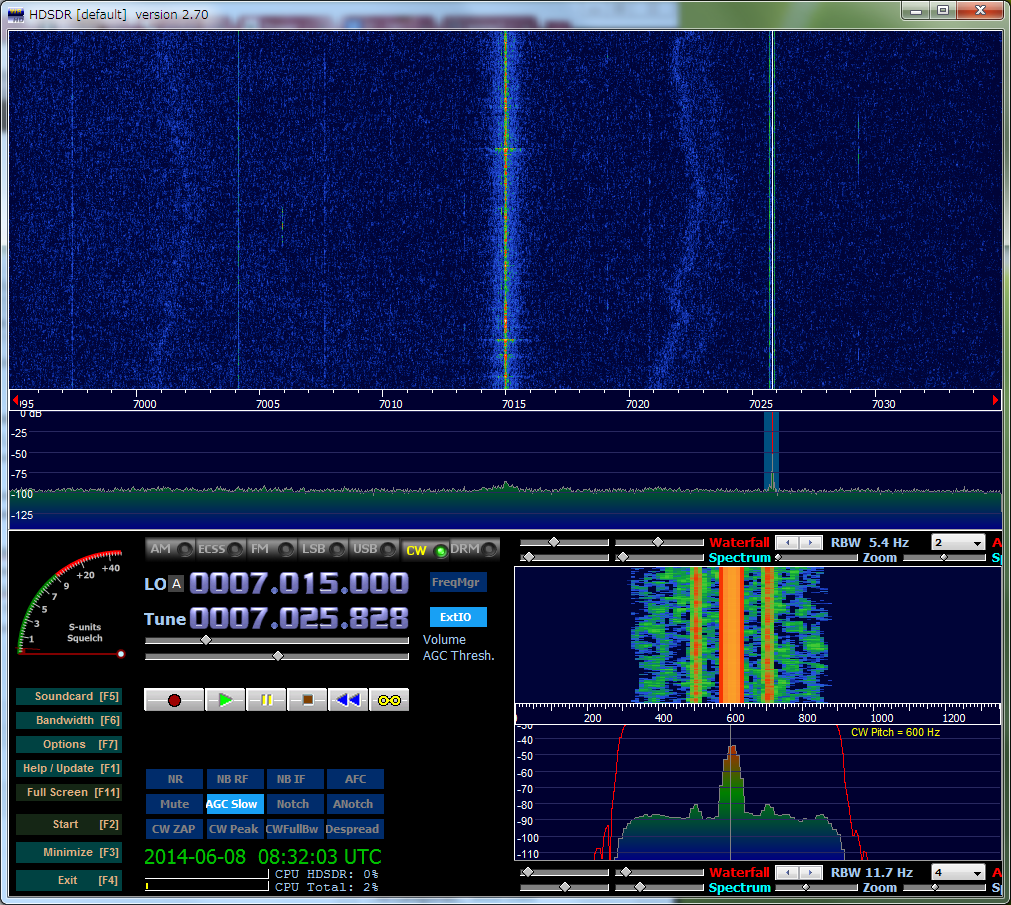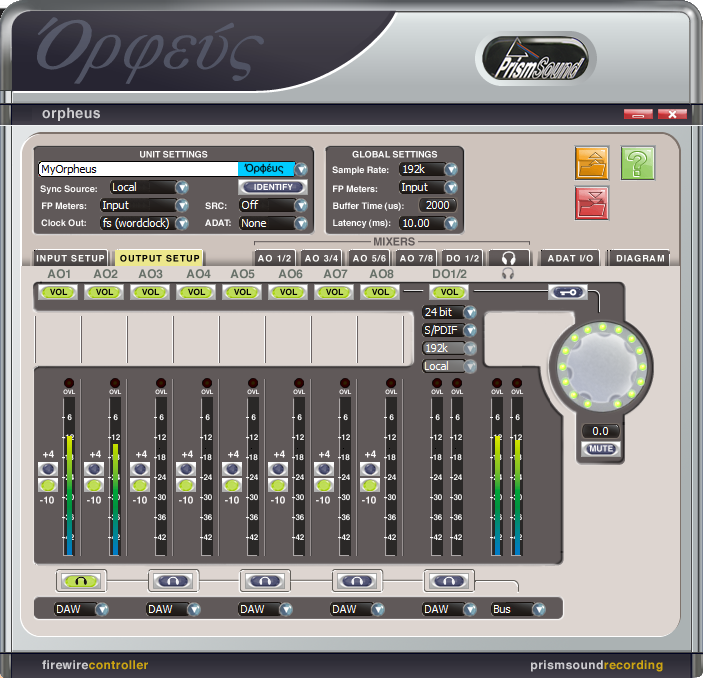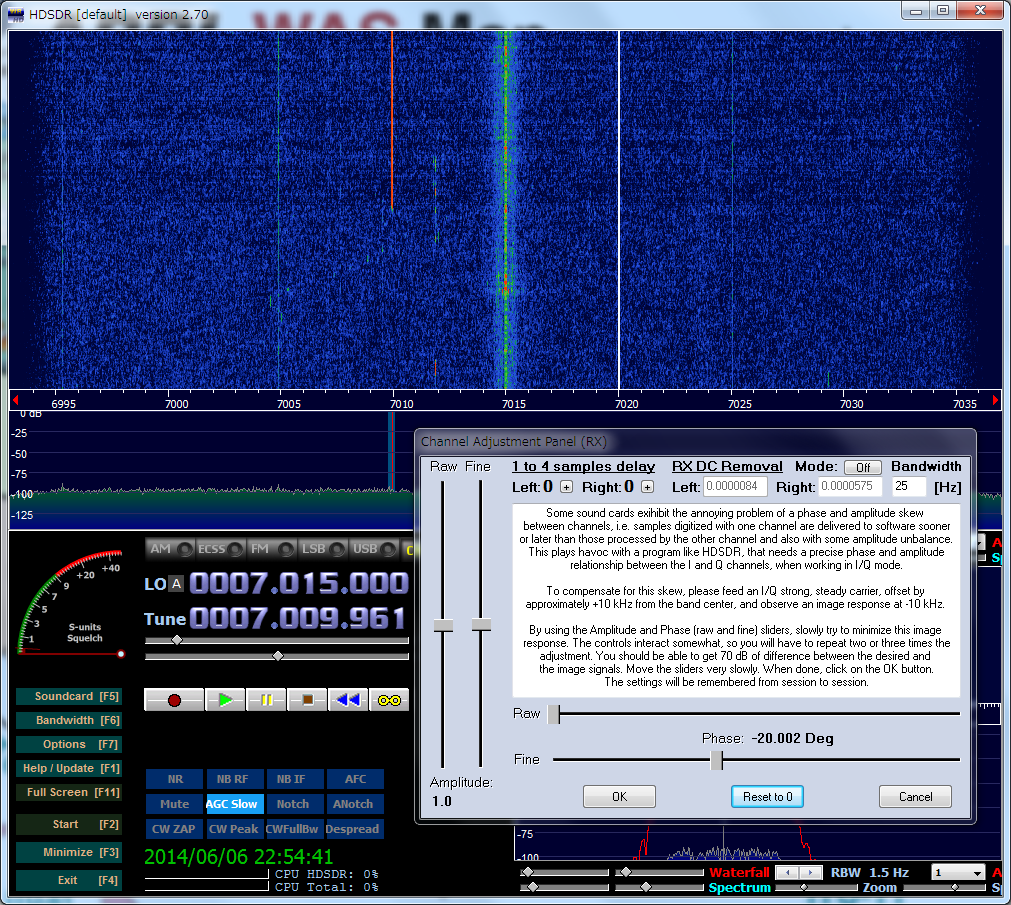The IPython Notebook is a web-based interactive computational environment. Perhaps I can use the environment for some of the tasks I am currently doing with AWK scripts and gnuplot.
Fine tuning for SSB
Sometimes I do use my rig in SSB mode, not for QSO but for experiments. A wave file containing a sweep signal is played on a PC, and the audio signal is fed into IC-7410 via USB I/F. The RF output into a dummy load is monitored with SoftLC44 and HDSDR.
Instead of a sweep signal, you can use, say, a 1kHz pure tone, to fine-tune HDSDR so that you will have a beat frequency of almost 0Hz between the original and the received signals. IC-7410’s TX frequency is set to 7.050.000Hz, so you can see from the figure that there is a 11Hz difference between the two nominal frequencies.
Since you now have the perfect tuning point, you can hear the effect of tuning errors of a few Hz by playing the audio file containing human voices, and by intentionally giving some offset to the tuning. Can you tell the difference when there is a tuning error of just 1Hz?
HamQTH (2)
HamQTH
HamQTH is a yet another hamradio callbook.
You can try XML callbook search, for example, as in a following manner:
% wget "http://www.hamqth.com/xml.php?id=your_session_ID&callsign=jh1ood&prg=myprogam" % cat xml.php_something.. <?xml version="1.0"?> <HamQTH version="2.0" xmlns="http://www.hamqth.com"> <search> <callsign>jh1ood</callsign> <nick>Mike</nick> <qth>Tokyo</qth> <country>Japan</country> <adif>339</adif> <itu>45</itu> <cq>25</cq> <grid>PM95sp</grid> <adr_city>Tokyo</adr_city> <adr_country>Japan</adr_country> <adr_adif>339</adr_adif> <lotw>Y</lotw> <qsl>N</qsl> <eqsl>Y</eqsl> <email>jh1ood_at_gmail.com</email> <latitude>35.6378</latitude> <longitude>139.5042</longitude> <continent>AS</continent> <utc_offset>-9</utc_offset> <picture>http://www.hamqth.com/userfiles/j/jh/jh1ood/_profile/blueracer2.jpg</picture> <lookups>26</lookups> <registered>Y</registered> </search> </HamQTH>
Orpheus as a mixer
Orpheus is a FireWire multi-channel audio interface, and can be used as an 8-input 8-output mixer.
Since we want to compare the sounds form IC-7410 and Soft66LC4 both receiving the same RF signal, we put the analogue sound output of IC-7410 into AI5/AI6, and HDSDR output into AO 1/2.
You can mix and monitor the sound using the Control Panel of Orpheus. A solo button is a quick way to listen to a particular source only.
IC-7410 and Soft66LC4
Both IC-7410 and Soft66LC4 can be controlled simultaneously from HDSDR.
Soft66LC4 is controlled via ExtIO_Soft66ADH.dll.
And IC-7410 via Omni-rig, using IC7410.ini.
If you click any place on the waterfall, both Soft66LC4 and IC-7410 are tuned to that frequency, and if you wish, you can monitor both the sounds with the same CW pitch, if you care for the LO frequency calibration.
Soft66LC4 and HDSDR
Here is my sending CQ received by Soft66LC4 and HDSDR.
This is the beginning part of the message. The AGC is set to slow, and the bandwidth is around plus_minus 200Hz.
And this is the ending part. The audio file is here.
IC-7410 vs. Soft66LC4
If you wish to compare the sound from two receivers listening to the same RF signal, you need a spliter.
A 3dB hybrid transormer is the desired solution, but you can use a resistive tee with obvious disadvantages such as a greater loss and poor isolation between the ports.
http://en.wikipedia.org/wiki/Power_dividers_and_directional_couplers
The RF signal, fed into a dummy load, from IC-7410 at 7026.00kHz is received with Soft66LC4 at 7025.828kHz with almost no audible beat from the two nominal 600Hz tones.
So the difference bewteen the two LOs are around 172Hz.
Listening to the same CW signals with IC-7410 and Soft66LC4 simultaneously, it seems to me that the sound from Soft66LC4 and HDSDR is preferable.
Mass in B Minor

http://www.linnrecords.com/recording-j-s-bach-mass-in-b-minor-breitkopf-hartel-edition-edited-by-j-rifkin-2006.aspx
Some music files are available with a 192kHz/24-bit format.
You need an audio player that can deal with such files. I used to write my own with a customized version of the OS, but that is another story.
And then you need a D/A converter, capable of handling 192kHz/24-bit streams, to fully enjoy the high quality of the music. But, are you not tempted to use such nice D/A converters for your Software Defined Radio as well?

